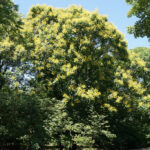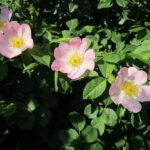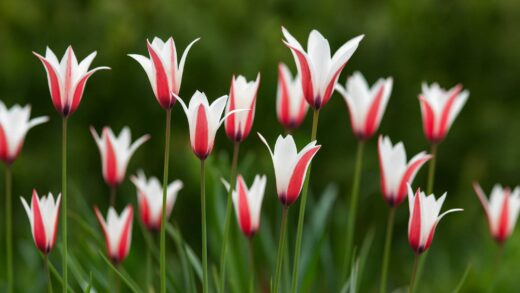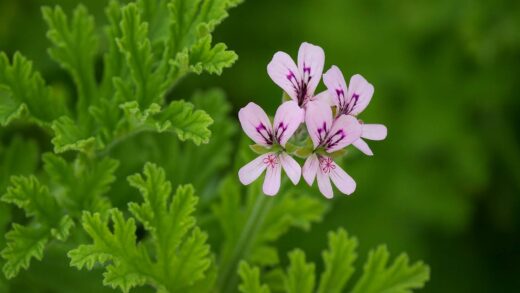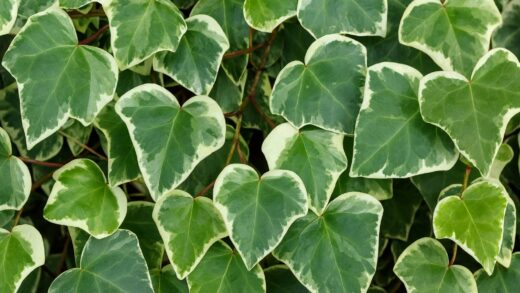The pruning requirements for the fernleaf peony are refreshingly simple and primarily involve end-of-season sanitation and the occasional removal of spent blooms. This is not a plant that requires complex shaping, formative pruning, or regular trimming during the growing season. The main pruning task is the annual cutting back of all foliage in the autumn, a critical step for disease prevention and preparing the plant for winter dormancy. Understanding when and how to perform these few simple cuts is key to maintaining a healthy and attractive plant year after year.
The most important pruning activity for any herbaceous peony, including the fernleaf peony, is the annual autumn cleanup. This should be done late in the season, after the foliage has naturally yellowed and died back completely. This process typically occurs after the first few hard frosts of the season have signaled to the plant that it is time to enter full dormancy. It is crucial to wait until the foliage has completely senesced, as the plant is actively reabsorbing valuable energy and nutrients from its leaves and stems to store in its roots for the winter.
Once the plant is fully dormant, you should use a clean, sharp pair of pruners or shears to cut all of the stems down to a height of about 2 to 5 centimeters above the ground. Some gardeners prefer to cut them flush with the soil level. The primary reason for this task is sanitation. The old, dead foliage can harbor the overwintering spores of fungal diseases, most notably botrytis blight. By cutting back and completely removing all of the above-ground plant material, you significantly reduce the amount of pathogen inoculum available to re-infect the new shoots in the spring.
After cutting back the stems, it is imperative to gather and remove all of the debris from the garden area. Do not leave the old leaves and stems on the ground over winter to decompose, and do not add them to your home compost pile. The spores of botrytis can easily survive the composting process and could be reintroduced to your garden later. The safest way to dispose of the material is to burn it (if permissible in your area) or to bag it and put it out with your household trash. This single act of hygiene is the most effective preventative measure against disease.
Deadheading after flowering
Deadheading, or the removal of spent flowers, is an optional but often beneficial task for fernleaf peonies. After the brilliant red flowers have faded, they will begin to form seed pods. The process of producing viable seeds requires a significant amount of energy from the plant. By removing the spent flowers, you prevent seed formation and allow the plant to redirect that energy into more valuable pursuits, such as strengthening its root system and developing its storage tubers for the following year’s display. This can lead to a more vigorous plant and a better bloom count in subsequent seasons.
More articles on this topic
The process of deadheading is simple. Using a pair of sharp pruners, snip off the flower head along with its short stem, making the cut just above a healthy set of leaves. This not only serves a practical purpose but also improves the aesthetic appearance of the plant, keeping it looking tidy after the main floral display is over. For the fernleaf peony, which has a relatively short but glorious blooming period, deadheading helps to keep the focus on its attractive, feathery foliage for the remainder of its active season.
It is important not to be too aggressive when deadheading. You should only remove the flower and its immediate stem, leaving as much of the healthy foliage on the plant as possible. The leaves are the plant’s solar panels, and they will continue to photosynthesize and produce energy for several weeks or months after flowering, right up until the plant begins to enter summer dormancy. Removing too much foliage at this stage would be counterproductive and would weaken the plant.
While deadheading is beneficial for the health of the plant, it does mean that you will not be able to collect seeds. If you are interested in trying to propagate your fernleaf peony from seed, you should leave a few of the faded flowers on the plant to allow the seed pods to develop and mature. Be aware, however, that growing peonies from seed is a very long and patient process, and the resulting offspring may not be identical to the parent plant.
Pruning for disease management
During the growing season, you should regularly inspect your fernleaf peony for any signs of disease, particularly during the cool, damp weather of spring when botrytis blight is most active. If you spot any stems that are wilted, blackened, or showing signs of fuzzy gray mold, you must act immediately. Using a clean, sharp pair of pruners, cut off the infected stem well below the diseased area, making sure your cut is in healthy, green tissue.
More articles on this topic
It is crucial to be diligent about sanitation when making these cuts. After each cut into diseased tissue, you should sterilize your pruners to prevent spreading the fungal spores to other parts of the plant or to other peonies in your garden. You can do this by wiping the blades with a cloth soaked in rubbing alcohol or a 10% bleach solution. This simple step can make a significant difference in containing the spread of the disease.
The diseased material that you have removed should be handled carefully. Do not simply toss it on the ground or into your compost bin. It should be immediately bagged and removed from the garden to be disposed of in the trash. Prompt removal of infected parts helps to reduce the overall fungal load in the area and can prevent a minor spot of disease from turning into a major outbreak that could threaten the entire plant.
This type of selective pruning during the growing season is a reactive measure, but it is an important part of an integrated pest management strategy. Combined with the proactive measures of ensuring good air circulation and practicing diligent autumn cleanup, it helps to keep your fernleaf peony healthy and beautiful. Regular monitoring allows you to intervene at the earliest sign of trouble.
Pruning to improve air circulation
In some specific situations, a light thinning of the stems may be beneficial, particularly for a very old, large, and densely crowded clump. If a plant has become so thick that air cannot move freely through its center, it can create a humid microclimate that is highly conducive to the development of fungal diseases. In such cases, selectively removing a few of the weakest or most crowded stems from the center of the clump can improve air circulation significantly.
This type of thinning should be done in the spring, just as the new growth is well underway but before the flower buds have fully developed. The goal is not to reduce the overall size of the plant but simply to open it up a little. Using your clean pruners, reach into the center of the plant and cut a few of the thinnest stems right at their base. This allows more air and light to penetrate the interior of the clump, helping the foliage to dry more quickly and reducing the likelihood of disease.
This is not a task that needs to be done annually. It is only a consideration for exceptionally dense, mature clumps or for plants growing in a location with naturally poor air movement. For most fernleaf peonies, their naturally fine-textured foliage and relatively open habit provide adequate air circulation without any need for thinning. Over-thinning should be avoided, as it will reduce the overall fullness of the plant and potentially decrease the number of flowers.
Ultimately, the best way to ensure good air circulation is through proper initial spacing. When you first plant your fernleaf peony, give it plenty of room to grow to its mature size without being crowded by neighboring plants. This foresight at the planting stage is a much more effective long-term strategy for disease prevention than remedial pruning later on.
No need for shaping or spring pruning
It is important to emphasize that, unlike many shrubs and other perennials, the fernleaf peony does not require any kind of shaping or spring pruning to control its size or form. The plant has a naturally beautiful, rounded, and bushy habit that should be allowed to develop without interference. Its ultimate size is genetically determined, and attempting to keep it smaller by pruning it back during the growing season is both unnecessary and harmful.
Cutting back the healthy, growing stems of a peony in the spring or summer would be highly detrimental to the plant. This would remove the developing flower buds, preventing the plant from blooming that year. More importantly, it would remove a significant portion of the foliage that the plant needs to photosynthesize and create energy for survival and future growth. Such pruning would severely weaken the plant and set it back significantly.
The only cutting that should ever be done to healthy, green foliage during the growing season is for the purpose of bringing the beautiful flowers indoors to enjoy in a vase. When cutting flowers for arrangements, try to take as little of the stem and foliage as possible. Leave at least two or three sets of leaves on the remaining portion of the stem to help the plant continue to produce energy.
In summary, the pruning regimen for a fernleaf peony is elegantly simple: deadhead after flowering if you wish, remove any diseased parts immediately during the growing season, and perform a complete and thorough cut-back and cleanup of all foliage in the late autumn after the plant has gone dormant. By adhering to these straightforward guidelines, you will be providing exactly the kind of pruning care this unique and beautiful plant needs to thrive.







